December 11, 2024
Understanding Barrier Properties for Flexible Packaging
If you’re a packer dealing with fresh or shelf-stable products, you know that you have to consider more than just looks when choosing the right packaging. The wrong kind of packaging might not protect your items properly, leading to spoilage, damage, and waste.
Let’s take a closer look at what barrier properties are, why they matter, and how to choose the best flexible packaging material for your food product.
What Are Barrier Properties?
Barrier properties determine how well the packaging controls the inside atmosphere and the conditions your food product requires to stay fresher longer. They’re effectively shields that stop things like oxygen, moisture, light, or germs from getting in and affecting the quality and shelf life of what’s inside.
Different materials offer different levels of protection. Factors like the composition and thickness make a big difference in how well the packaging performs. Finding compatible barrier properties for your product is key for maximizing shelf life and overall product quality.
Types of Barrier Properties
Each type of barrier has an important role in controlling the atmosphere inside the packaging. Let’s explore a few of the key properties:
Gas Barrier
A gas barrier keeps air from getting in or out, which prevents oxidation (spoilage caused by air). This type of barrier is especially helpful for items that can lose flavor or texture if they’re exposed to too much air. Foods like fresh meat, cheese, and coffee beans stay fresh longer in gas barrier packaging.
Light Barrier
A light barrier helps block UV rays and bright light, which can change the color and taste of certain foods. This is important for products like chocolate, spices, and even some fruits and vegetables that can be sensitive to light.
Moisture Barrier
Moisture barriers keep humidity and other airborne moisture away from your products. This prevents snacks like chips, crackers, and baked goods from getting soggy, helping them stay crunchy and delicious.
This type of barrier is also great for keeping dried foods, like fruits and jerky, from absorbing moisture and losing their texture.
Microbial Barrier
For items that need a longer shelf life and extra protection from bacteria or other microbes, a microbial barrier is a must. This is key for foods like fresh produce, ground meat, and dairy items that are prone to spoilage. By extending the shelf life, microbial barriers also help reduce food waste.
Flexible Barrier Material Examples
There are a variety of materials used in flexible packaging, each offering unique advantages:
Metallized Films
These are thin layers of metal (usually aluminum) placed over plastic films. Metallized films create a strong barrier against light and gas, making them ideal for preserving freshness.
Plastic Polymers
Materials like EVOH (ethylene vinyl alcohol), PVDC (polyvinylidene chloride), and PVOH (polyvinyl alcohol) are commonly used in flexible packaging. Each of these plastic polymers has unique barrier qualities, such as gas resistance, that can be tailored to specific applications.
Plastic polymers can also be treated with hot needle micro-perforations. This technique creates tiny holes in the packaging, allowing for better airflow and maintaining product freshness. It’s also functionally ideal for microwavable and steamable packaging.
What to Consider When Choosing Flexible Packaging Material
When selecting the best packaging material, here are some important factors to consider:
- Shelf life: Depending on the projected sale volume and shelf space, your product may require a longer shelf life. Choosing the right material can help reduce waste and increase repeat orders from retailers.
- Sensitivity to moisture and oxygen: If your product is affected by moisture or air exposure, prioritize a material with strong moisture or gas barrier properties.
- Durability: Flexible packaging needs to stay in good condition from production to the point of sale. Make sure the material is durable enough to handle shipping and handling.
- Availability and cost: Choose a material that fits within your budget and can be sourced easily to prevent delays.
Protect Your Products with Sev-Rend
Choosing flexible packaging material with the right barrier properties keeps products protected and more appealing for consumers. For companies looking to get the most out of their packaging, we offer expert solutions tailored to your unique challenges.
Ready to switch to smarter packaging? Connect with a packaging expert to find the right material for your food product.

